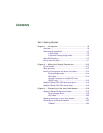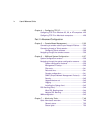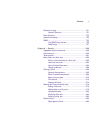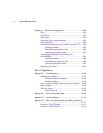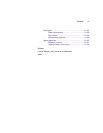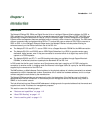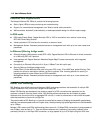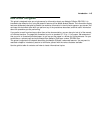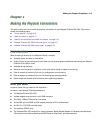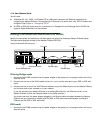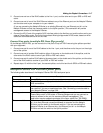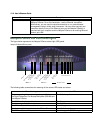
Introduction 1-11
CC
CC
hh
hh
aa
aa
pp
pp
tt
tt
ee
ee
rr
rr
11
11
II
II
nn
nn
tt
tt
rr
rr
oo
oo
dd
dd
uu
uu
cc
cc
tt
tt
ii
ii
oo
oo
nn
nn
OO
OO
vv
vv
ee
ee
rr
rr
vv
vv
ii
ii
ee
ee
ww
ww
The Netopia D-Series DSL DSUs are Digital Service Units or intelligent Ethernet filtering bridges for SDSL or
IDSL connections. They feature the ability to sense the connection type (Frame Relay or RFC 1483 DSL) and
automatically configure themselves for use as a DSU to Ethernet bridge. In either configuration the Netopia
D-Series offers management features available locally or remotely, either in-band or out-of-band. The DSU mode
offers a convenient way to migrate existing DDS or T1 service that uses an external CSU/DSU to connect to
SDSL or IDSL. In the intelligent Ethernet bridge mode, the Netopia D-Series includes packet filtering for
enhanced security on the LAN and efficient use of the DSL link.
■
The Netopia D7100 and D7171 use an SDSL link to a Copper Mountain DSLAM for the WAN connection.
■
The Netopia D3100-I and D3232 use an ISDN Digital Subscriber Line (IDSL) to provide remote users
dedicated, digital access, even if they are connected to a central office via a digital loop carrier (DLC)
system or an ISDN repeater.
■
The Netopia D3232 and D7171 use DSL bonding technology, as available through Copper Mountain
DSLAMs, to effectively double or quadruple the bandwidth of the DSL link.
In DSU mode the Auxiliary port functions as a Synchronous serial port supplying a V.35 DCE interface for
connection to another router. In bridging mode the Ethernet hub bridges traffic as a proxy for the MAC address
supplied by the remote end of the DSL link.
The MAC address, or Media Access Control address is the physical address of a device connected to a network,
expressed as a 48-bit hexadecimal number. Sometimes this is called the hardware address, and is a unique
number assigned to each device by the manufacturer.
The Netopia D-Series provides an auto-sensing function that determines if the Auxiliary port or the hub is
associated with the DSL connection. In either case you can manage the device via the hub using Telnet or
SNMP, or via the serial console.
The hub effectively has two Ethernet MAC addresses in bridging mode: the proxied address that the remote end
supplied and a local IP address for management purposes.
This section covers the following topics:
■
“Features and capabilities” on page 1-12
■
“About DSL Bonding” on page 1-12
■
“How to use this guide” on page 1-13



